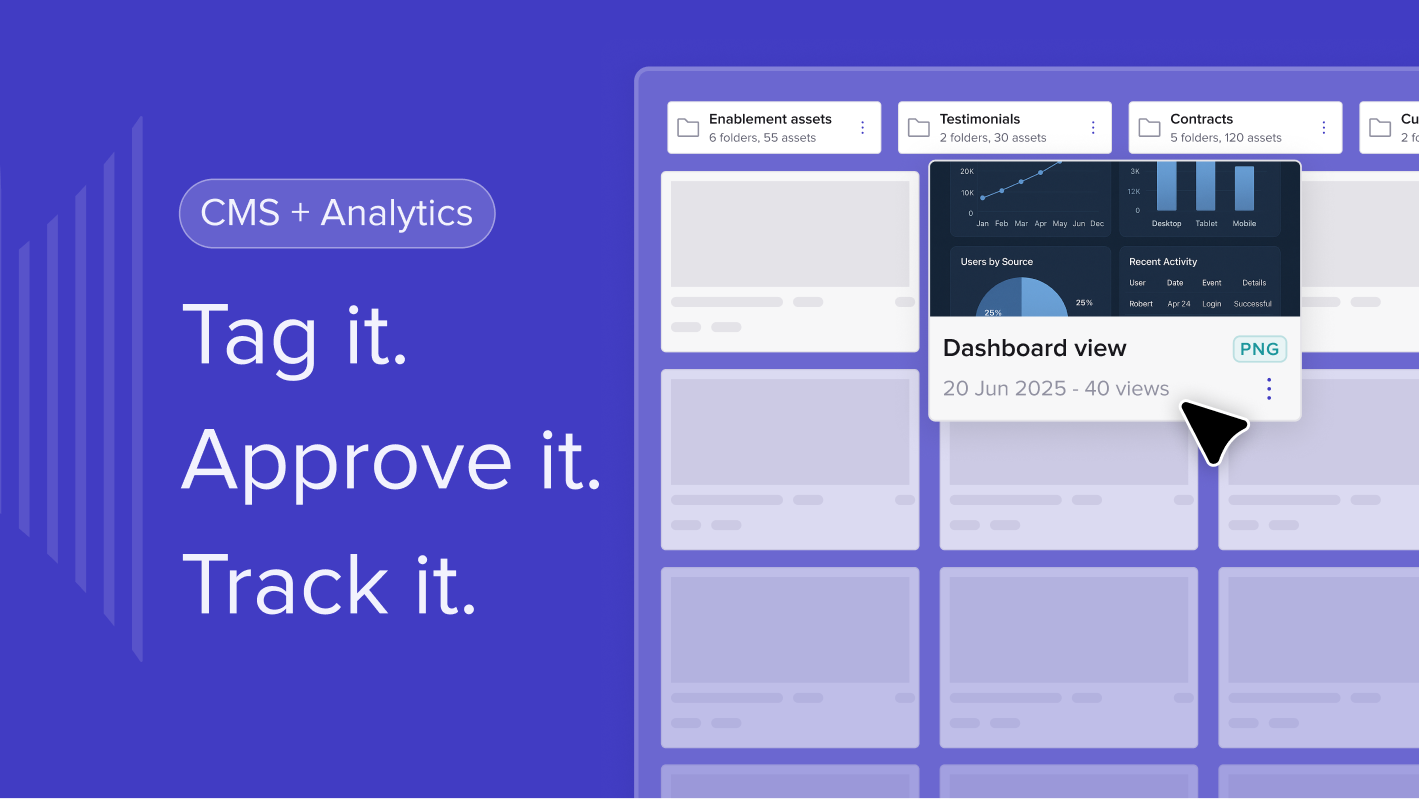Key takeaways
Creating a standout B2B sales proposal means tailoring it to your buyer’s needs, structuring it clearly, and using tools like digital sales rooms to personalise and track engagement. A strong proposal demonstrates your value, solves real buyer challenges, and moves deals forward faster.
In this article, we'll dive into the art of creating compelling B2B sales proposals. Whether you're new to B2B sales or looking to sales, this guide will give you the insights you need to create proposals that get results 👇
What is a B2B sales proposal?
A B2B sales proposal is more than a quote. It explains how your product or service solves a specific buyer’s problem, outlines pricing, and builds trust in your expertise. A great proposal connects the dots between your solution and the buyer’s goals.
They outline your company's products or services, costs, and terms of sale.
These proposals are your chance to showcase how your solution addresses a potential client's specific needs and challenges .
When crafting a B2B sales proposal, you need to focus on three key factors:
- Information about your company
- Expertise on the client's problem
- Methodology and pricing
Remember, a good proposal is more than just a quote. It's a tool to bring value to your prospective client.
By using trumpet's digital sales room, you can quickly create personalised proposals that integrate with your CRM and pull in buyer and company data, making the process more efficient and tailored to each client's needs.
How to write a compelling executive summary
Your executive summary hooks the reader. Keep it short but powerful by:
1. Address the need: Show that you understand the buyers problem and how solving it will benefit them.
2. Present your solution: Provide a high-level overview of your proposed solution and why it's effective.
3. Showcase your expertise: Highlight your qualifications and what sets you apart from competitors.
4. Include a call to action: Encourage the client to take the next step.
Using trumpet’s digital sales room, you can share your summary, proposal, and next steps all in one place, making it easy for buyers to engage and share internally.
.png)
How to structure your B2B sales proposal
To create a B2B sales proposal that truly resonates, you need to structure it effectively.
A well-crafted proposal showcases your understanding of the buyers needs and demonstrates your unique value proposition.
- Start with a clear executive summary that provides a brief overview of your proposal, highlighting key points and benefits.
- Follow this with an introduction to your company and how your solution aligns with the prospect's needs.
- Next, articulate the specific challenges or pain points the prospect is facing in a problem statement.
- Then, detail your proposed solution, emphasising how it addresses these challenges and the benefits it offers.
- Include an implementation plan outlining the steps, timelines, and key milestones.
- When presenting pricing, offer multiple options or packages to give clients flexibility.
Make sure to highlight the ROI and cost savings your solution offers, using data and projections to demonstrate long-term value.
Best practices for writing persuasive B2B proposals
To craft a compelling B2B proposal, start by thoroughly understanding your client's needs.
Tailor your proposal to address their specific challenges and goals. Use clear, concise language and avoid jargon that might confuse your reader.
Incorporate visuals like charts and infographics to make your proposal more engaging and easier to understand.
Personalisation is crucial - two out of three buyers are influenced by customised sales materials.
Remember to proofread carefully, as poor grammar can be a deal-breaker. making the process more efficient and tailored to each client's needs.
👉 Check out a personalised proposal and quote inside a trumpet Pod
Building personalised proposals in digital sales rooms
Digital sales rooms have completely switched up the way you create and deliver B2B sales proposals.
Using trumpet's Proposal Widget, you can whip up a personalised proposal in minutes.
This tool integrates with your CRM, pulling in buyer and company data to create tailored proposals effortlessly.
How does it all work?👇
Syncing with your CRM to auto populate the proposal

By connecting your CRM, you can automatically fill in key details like buyer information and specific requirements. This saves time and ensures accuracy in your proposals.
Personalising the proposal with buyer branding

Customise your proposals with the buyer's logo and brand colours.
This attention to detail shows your commitment and helps your proposal stand out from the crowd.
Populating the proposal with pre-uploaded products and pricing
Easily add relevant products and pricing from your pre-uploaded catalog. This feature allows you to quickly assemble a comprehensive proposal that meets your client's needs.
Crafting an effective B2B sales proposal
Crafting effective B2B sales proposals is an art that can make or break business deals.
By focusing on personalisation, clear communication, and addressing specific buyers needs, businesses can create proposals that resonate with potential buyer and drive conversions.
To wrap up, remember that a well-crafted proposal is more than just a document; it's a powerful tool to showcase your value and win new business.
Final thoughts
A standout B2B sales proposal doesn’t just describe your offer - it proves your value. Use clear structure, buyer insights, and tools like trumpet to deliver proposals that win more business and keep buyers moving confidently to “yes.”
FAQs
Why is personalisation so important?
Buyers are more likely to trust and act on proposals that feel written for them, not just copy-pasted.
When should I share pricing?
Be clear and upfront. Showing flexible packages or tiers builds trust and makes buyers feel in control.
How can I track if my proposal is working?
Use a digital sales room like trumpet to see exactly who opens, shares, or comments on your proposal.
What if my proposal gets ignored?
Follow up using your engagement data. For example: “I saw you viewed the ROI section - do you have any questions?”

.svg)
.svg)
.svg)
.svg)
.svg)
.svg)
.svg)
.svg)
.svg)
.png)
.svg)
.svg)
.svg)
.svg)

.svg)
.svg)
%201.svg)
.svg)
%201.svg)



.svg)


















![How to Get Started with Buyer Enablement [With Examples]](https://cdn.prod.website-files.com/65cf4fecbed2754c2236665d/65cf4fecbed2754c22366bdb_65a5af83e742f76e34ce06f3_Customer%2520Onboarding%2520_%2520Everything%2520you%2520need%2520(2).png)
.png)



.png)



.png)












.png)


.png)


.png)
.png)







